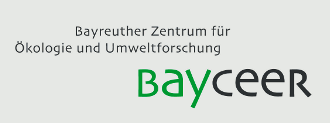Growth of extraradical ectomycorrhizal mycelium and fine roots in a young Norway spruce stand
O 3.5 in Ökosysteme: Funktion und Leistungen
11.10.2012, 15:30-15:45, H8
The partitioning of the below ground carbon input to forest soils into root litter, exudates and extraradical ectomycorrhizal mycelium (ECM) is a matter of debate. Here, we studied simultaneously the growth of fine roots and ECM in different substrates in a young Norway spruce site. Cylindrical ingrowth mesh bags of 16 cm diameter and 12 cm height were placed in 0 - 12 cm soil depth (forest floor and EA horizon). The 2 mm mesh size allowed the ingrowth of fungal hyphae and roots whereas the 45 µm mesh size only allowed the ingrowth of fungal hyphae. Controls without any ingrowth were realized by closed tubes in 2009 and by 1 µm mesh bags in 2010. Time between installation and removal of the mesh bags was 12 to 16 months during June 2009 to October 2011. The mesh bags were filled with 3 different substrates: natural mineral soil (EA horizon), pure quartz sand and crushed granite. The total fungal biomass was estimated by the PLFA 18:2ω6,9 and the ECM biomass calculated as difference between total fungal biomass in mesh bags and in controls.In all substrates, the maximum ECM biomass was found in October of each year. ECM biomass was in the most cases higher in 2 mm than in 45 µm mesh bags, however, the differences of ECM biomass between substrates and years were substantial: The maximum ECM biomass was 438 kg ha-1 in October 2010 in 2 mm mesh bags with EA substrate, and not detectable in 2011 in 45 µm mesh bags with quartz sand. In relation to quartz sand, the high P content of the crushed granite did not influence the ECM biomass. Fine root biomass reached a maximum of 2343 kg ha-1 in October 2010 in mesh bags with quartz sand after 16 months exposure. In 2011, the maximum of fine root biomass (525 kg ha-1) was observed in crushed granite, but differences between substrates were not significant. In quartz sand and crushed granite, ECM biomass correlated positively with fine root biomass and the number of root tips, but negatively with specific root length. The ratio of ECM biomass/fine root biomass in October ranged from 0.1 to 0.2 in quartz sand and crushed granite, but from 0.4 to 0.8 in the EA substrate. In view of literature estimates on the turnover time of ECM, its growth may result in a C flux similar to the production of fine roots under natural soil conditions.
Export as iCal:


